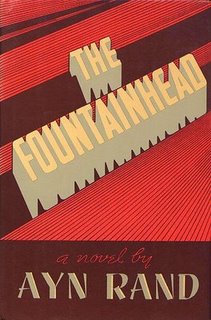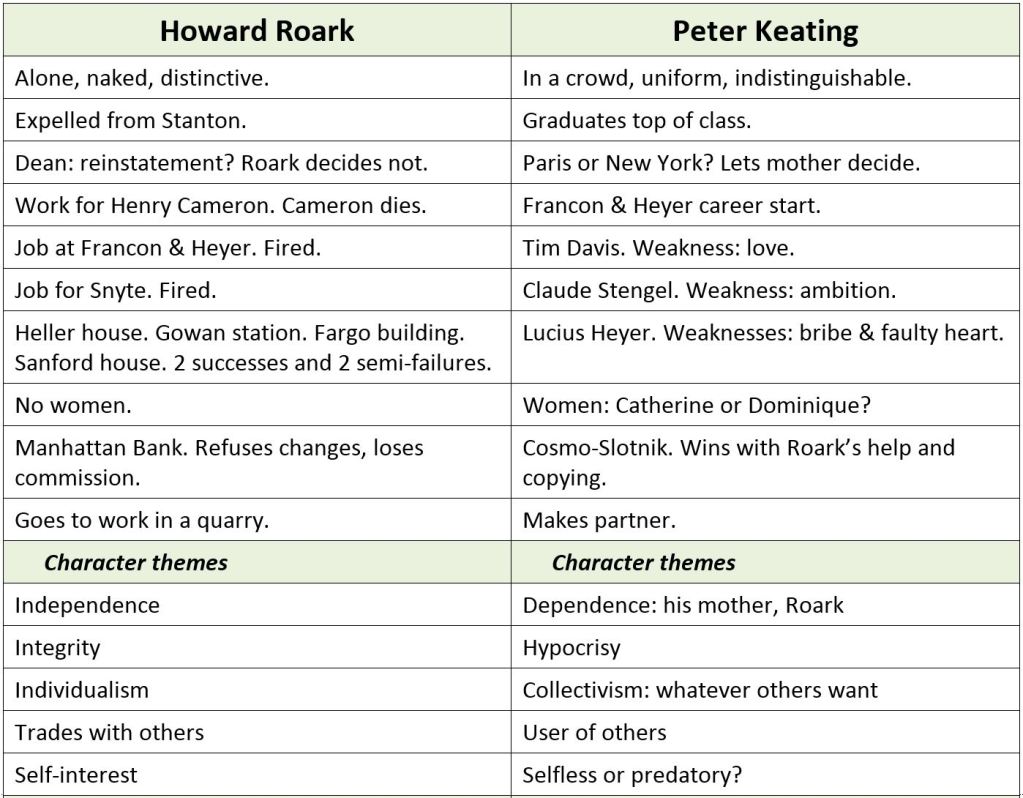In my judgment, Ayn Rand’s The Fountainhead is the greatest novel on the themes of independence and integrity. I’m reposting the contrast of Howard Roark and Peter Keating below, as in my Introduction to Philosophy course this week we are reading Part I, in which Rand’s primary purpose is to contrast the characters of Roark and Keating.
This table (click to enlarge) summarizes the main events in each young man’s early career.
Roark’s career goes on a downward trajectory, and his independence and integrity seem to have made it impossible for his career to progress. Meanwhile, Keating’s career goes on an upward trajectory, and his use-and-be-used strategy seems to have made possible his financial and reputational success.
Abstracting: Roark’s character is moral but he is a practical failure, but Keating’s character is immoral and he flourishes practically.
So the question at the end of Part One is: Is there a dichotomy between morality and practicality?
Related posts on The Fountainhead
* Roark and Keating: First meetings.
* Toohey’s five strategies of altruism.
* Gail Wynand’s power strategy (Part 1).
* Gordon Prescott: Heidegger’s disciple?
* Marcel Duchamp and Lillian Rearden.
* Elements of Roark’s character remind me of this description of Beethoven.


Like what happens with carnivores and herbivores, each one is trying to survive (same objective), but evolution gave them different pools of genes (or memes) that work well together.
One must also consider context when judging their strategies. As Peter lived in a place and time welcoming to his strategy, he flourished. If, instead of being in that context, he were in a place and time dominated by people of libertarian inclination, I doubt he would flourish.
Following the Austrian School of Economics, I would not say that one of them is moral and the other is practical, they both act to survive and the only judgments are ‘they are using necessary and sufficient means’ or ‘they aren’t doing that’.